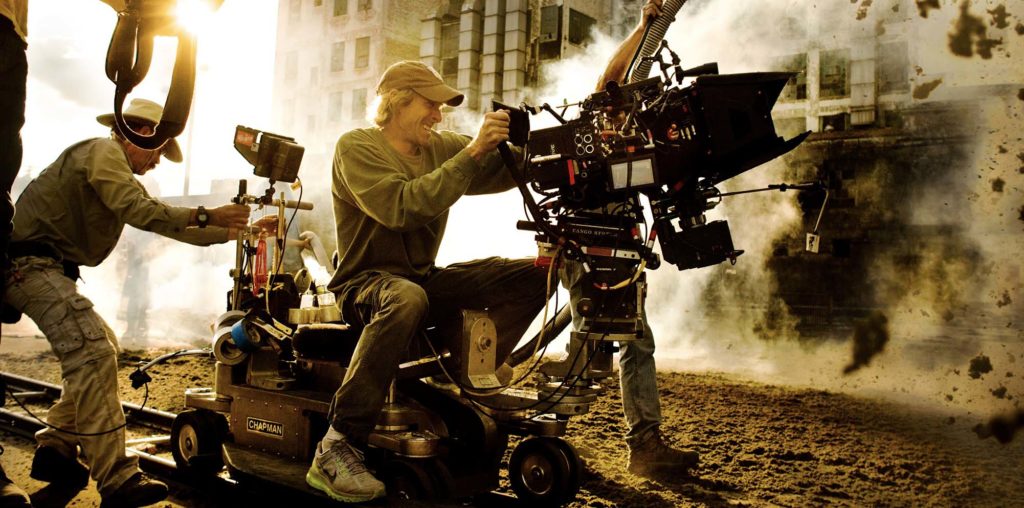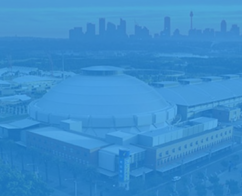
Whenever great art is made, it will always have its detractors.
People said Vincent van Gogh was terrible back in his day (smash that like button if you mainly knew that because of Doctor Who). Likewise, someday, hopefully, Michael Bay will be remembered as an underappreciated auteur for his work on the Transformers films. And no, this isn’t sarcasm, we’re just tired of everyone talkin’ smack.
Sure, when Bumblebee came out, everyone wanted to praise it for all its nostalgia and references, BUT if you remember our article on nostalgia, you might agree that nostalgia isn’t always the best approach to a reboot, something Bay knows very well.
So, what did Michael Bay do right by the Transformers?
The action!
Let’s clear one thing up, a myth that has been perpetuated by people riding the easy criticism train; the idea that the fight scenes are so crazy it’s impossible to follow what’s going on. It’s easy to follow what’s happening. The clashing and flying of metal may occasionally obscure the action, but it’s all part of the magic of Bayhem.
The camera, like the action, hardly stops moving in a Bayformers fight scene, and he’s particularly fond of grandiose, low-angle sweeping shots that convey the awesome power of the combatants. Optimus’ arrival to save Bumblebee from Soundwave in Dark of the Moon is a perfect example, as he unhooks his jetpack and uses his momentum to spin around, shooting 360 degrees and dispatching Decepticons. Slow-motion shots punctuate the fight, taking us through the carnage mid-battle, gliding past Autobots in battle with Decepticons, missiles flying, people screaming; it’s almost operatic in its scale and presentation.
Bay also likes the fights to erupt around the human characters, and will track the humans running through a battlefield, as the robots clash around and above them, showing how small the humans are in comparison to these giants. The fight choreography is great, the attacks are uncompromising in how visceral they are. Faces are ripped off, holes are blown through chests, and all the while, the robots movement’s flow incredibly smoothly, like in the forest fight from Revenge of the Fallen. Optimus slices through enemies in one swing and gracefully moves onto the rest, barely stopping.
Whether you love or hate the chaotic cinematography, it’s undeniable that ‘Bayhem’ is conclusive evidence of Bay’s claim of auteurship, something absent from Bumblebee. When you watch a Transformers fight scene, you know it’s a Michael Bay fight scene.
The comedy
Yes, the reputation for Bayformers humour is well known; it’s seen as juvenile and forced. Well, maybe that is true, but one thing we will dispute you on is that the comic timing in the Bay films is on point, even if some of the jokes don’t quite manage to land.
There isn’t a lot of downtime in these films, so between the action, the jokes are pretty rapid-fire, which is good for both sides. If you like them, great, more for you. If you don’t, they don’t linger too long, but as the article suggests, we like them.
Shia LaBeouf is a charismatic actor, and Transformers particularly allowed his physical comedy to shine, seeing as how he was mostly acting opposite empty space. Even so, his hilariously over-the-top reactions felt genuine and funny, and that’s impressive enough on its own, and the same goes for John Turturro’s Agent Simmons.
The Autobot banter is also an underappreciated aspect of the films, that only got better as they went on. The Autobot team of the lazy and arrogant Crosshairs, the short-tempered Drift, the jolly trigger-happy Hound, the immature and vain Bumblebee, and the ever-serious and stoic Prime form a really charming and funny dynamic in Age of Extinction and The Last Knight.
Nostalgia-free zone
Not to retread old territory, but something that really endeared a lot of new fans to Michael Bay’s vision for the Transformers was that he had virtually no attachment to the source material. Now that does sound counter-intuitive, but there is a case for it.
Making the story modern and accessible for everyone undoubtedly made the series more popular, and we would never have Bumblebee or half the cartoons we have now if not for Michael Bay. Not being a fan allowed Bay to step back and not focus on ways to please the old audience, which might put off new viewers.
The robots may not look like they once did, but the soul of the characters is still there in the design changes and personality reinterpretations. Optimus is still a badass dedicated to seeing the good in all humans, even if his faith is tested sometimes. Bee is still a young jokester, his personality is just from the early 2000s as opposed to the ’80s (who would choose to be a Beetle when you could be a sick Camaro?). Soundwave is still the cold intelligence officer with his little minions, Megatron is still basically the same as always, etc.
There was an excitement in seeing how classic characters would be updated with brand new looks, and most of the time they didn’t disappoint. Soundwave as a satellite makes perfect sense for him, Shockwave’s piercing red-eye is still just as emotionless and scary as he once was, and even Dorito Starscream has a certain appeal; the frail figure conveys how weak he really is.
Bumblebee may look and sound just like the original, which is great for fans who have felt wronged by Bay, but for fans who don’t want to see another version of the ’80s cartoon again, there’s value in staying away from nostalgia.
Since Bumblebee has come out it seems Transformers fans have been forced to take a side, choosing either Team Travis, or the Bayformers, and committing to hating the other. What we should remember is that, even though they are vastly different, we’re all Transformers fans. We all wanna see the best for our robots in disguise; ‘best’ just means something different to everyone. Travis Knight fans, Bay fans, extend the hand of friendship to one another – don’t backstab your comrades like a Decepticon.









